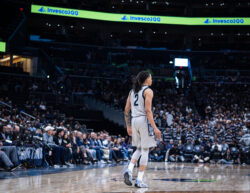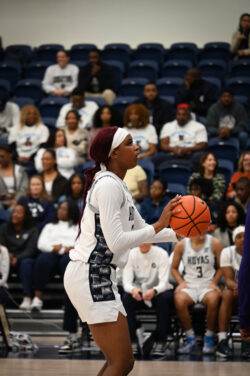Back in January, Fox Sports ran a slideshow on what they deemed to be the worst contract on each NBA team. While some of their conclusions are arguable, by my count, 19 of those contracts belonged to big men – players that can play center or power forward, but nothing more.
In today’s NBA, height is at a premium. When free agency started this summer, Indiana center and former Hoya Roy Hibbert was the first to receive a major offer, as Portland offered him a maximum four-year, $58 million contract. Now, in Hibbert’s case, numbers alone do not paint a comprehensive picture. Though consistently trending upward, Hibbert hasn’t averaged a double double in his entire four-year career.
And that’s where a big man’s statistical value can be thrown out the window. The rest of the league recognized Hibbert’s impact on games, naming him to his first All-Star game last season. In the playoffs, even superhuman LeBron James hesitated before driving on Hibbert. The former Georgetown star, despite a limited statistical impact, is a defensive monster and, consequently, one of the five best centers in the league.
But that logic is also what gets teams into trouble – general managers drool over height and throw money whenever such a rare commodity comes to pass. Instances like Hibbert’s, where the center develops and improves consistently, are rare, making the center gamble a franchise-crippler at times.
Simply put, there are not too many great centers out there. And thus, if a team is incapable of acquiring one of those elite seven-footers, why bother overpaying for a mediocre version? That thinking worked just fine for Pat Riley and the Miami Heat, who just won their first NBA Championship in June.
Riley, the Heat’s team president and one of the pioneers of this model, advocates for “position-less basketball.” “The game today is different than it was five years ago, 10 years ago, 15 years ago,” Riley told the Sun Sentinel. “It’s sort of a position-less game. We don’t talk about point guards anymore, two guards or shooting guards or power forwards. As a matter of fact, when the word ‘power forward’ comes out, I want to eat some oatmeal.”
Of course, that position-less model becomes significantly more successful with James, a mammoth small forward capable of playing all five positions, at the forefront. In critical moments during the Heat’s championship run, seven-footers like Joel Anthony did not see the floor. Instead, versatile players like James spread the floor, nullifying the archaic model still present with some rosters.
As athleticism becomes a greater component of basketball, both at the professional and collegiate level, we will see more of Riley’s model. The U.S. Men’s Olympic team just came back from London after winning the same way. James and Carmelo Anthony played significant minutes at center for the team. For both teams, it was a necessary step, as well as a reflection of the dearth of big men on their respective rosters.
With basketball moving in this direction, it is refreshing to see the model flow over to the collegiate level, especially on the Hilltop. The Georgetown program has been fortunate with big men – a list that includes Patrick Ewing, Alonzo Mourning, and most recently, Greg Monroe. Head coach John Thompson III realizes players like Monroe don’t grow on trees, though. With that in mind, his recruiting has indeed moved to a model similar to Riley’s.
“We knew a few years ago we wanted bigger and longer,” Thompson told Jon Rothstein. “As a coach, you get caught up in how you want to play. I know for me personally, I want to play with guys who are really long and not classified as a specific position.”
Logic like Thompson’s and Riley’s really starts to tap into what could make this iteration of the Hoyas successful. So what if sophomore Otto Porter is lanky? His preternatural rebounding ability is second to none on the roster, reflected in his team-high 6.8 rebounds per game and making him ideal for Georgetown’s offense. Similarly, sophomore Greg Whittington may have the height of a power forward, but why not utilize his lockdown abilities on defense at shooting guard?
One has to keep in mind that Thompson’s model is still in its infantile stages. Porter and Whittington are the only evident examples of the position-less model; junior Nate Lubick, for instance, won’t be tasked with guarding a smaller player or handling the ball anytime soon.
But, as Riley, James, and the Heat proved this past season, the model is feasible and, with the right personnel, can be wildly successful. Thompson was ahead of the curve too – but with Miami as the model, position-less basketball just got a lot more prominent.




